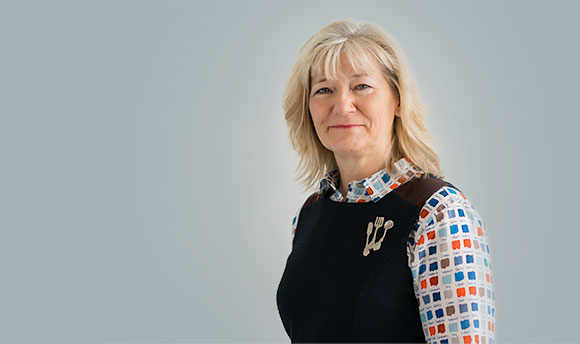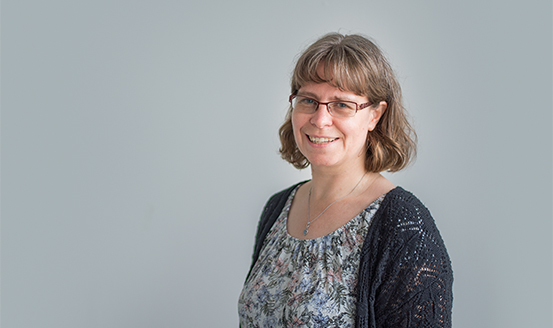The Difference between a Diagnostic Radiographer and a Therapeutic Radiographer
This page provides information for prospective students on the differences between the roles of a diagnostic radiographer and a therapeutic radiographer.
Accident and Emergency
A newly qualified radiographer may spend much of his/her time working in the accident and emergency department dealing with injured patients, parents or relatives and liaising with other clinical colleagues within the hospital. There are now many radiographers working within casualty departments who also report on the radiographs taken.
Outpatient Departments
Outpatients may come to the department at the request of their GP or consultant for a variety of examinations. Plain films may be taken of any area of the body to show anatomy and any pathology, but sometimes a contrast medium is required to demonstrate how an organ is functioning. Often, patients have regular follow-up examinations to show healing after trauma or surgery, giving the radiographer the pleasure of seeing the patient get better.
Ward Patients
Diagnostic radiographers produce and interpret high-quality images used in the diagnosis of injury and disease. They can work in the NHS or the private sector. Within the hospital setting, they work in a number of different sections of the main radiography department which encompasses a wide variety of imaging investigations. Radiographers may work in different areas on a weekly or monthly rotation with their colleagues, and take part in an on-call system which provides emergency cover for all areas.
Patients may be examined on the ward using a mobile X-ray machine or come to the department for their examination on a bed or in a chair. The radiographer must be able adapt their techniques to take these problems into account but still produce high quality images.
Theatre
Often a radiographer will work in the operating theatre during the repair of broken bones, spinal surgery, gall-bladder removal and brain surgery. This type of work requires confidence, technical skill and the ability to perform within a team.
Computed Tomography
CT is a computer-based imaging technique which can display 'slices' of the area of interest on a monitor. It is particularly useful for imaging blood vessels and organs using contrast media to enhance them, for staging disease and planning treatment. CT is also used in emergency situations, for example, a road traffic accident where a blood clot on the brain is suspected.
Ultrasound
Ultrasound is imaging using sound waves, not X-rays. It is a real-time technique which displays a moving image on the monitor as the patient is being scanned. It can be applied to many parts of the body including abdominal and pelvic organs, the breast and other soft-tissue areas, the heart and blood vessels, and it is used to monitor the health of a baby during pregnancy. The radiographer may need to develop a rapport with the patient and display tact in discussing the results of the examination. Most recently, ultrasound is being used in musculoskeletal injuries and contrast media studies are under development. Post-graduate training is available for radiographers working in ultrasound departments.
Magnetic Resonance Imaging
MRI is another computer-based imaging technique which uses a magnetic field rather than X-rays to create an image on a monitor. This is particularly useful for children since no ionising radiation is used. Scans of any area of the body can be acquired and reconstructed in any plane or orientation to best demonstrate the area of interest. Again, contrast media are available for enhancement purposes. Some MR systems are interfaced with other digital systems which allow the images to be viewed in GP surgeries or other hospitals anywhere in the world. Post-graduate courses are available for radiographers working in MRI units
Personal Attributes
Radiographers should have good interpersonal skills to deal with patients of all types and ages, many of whom need considerable reassurance and counselling as well as an explanation of the radiographic procedure with which they are being examined.
As a radiographer you must be confident about working with complex high-technology equipment. You also need to give great attention to detail but also be flexible enough to treat each patient as an individual case.
The continuing development of radiographic techniques and treatments means that radiographers are constantly learning new skills and the work is vary varied. Radiographers have to be able to think quickly and make decisions independently.
Career Prospects
Diagnostic radiography is a fast-moving and continually changing profession, and long-term career prospects include management, research, clinical work and teaching. During the course of education, training and clinical practice, radiographers develop such a wide range of transferable skills - including pyscho-social, organisational, managerial, technical and scientific skills, - that individuals are prepared for work in any situation that best suits their individual skills and interests. This can extend to general management at all levels within and outside the NHS, including industry and higher education.
After their degree diagnostic radiographers may choose to specialise in any of the areas shown above.
The therapeutic radiographer works closely with doctors, nurses, physicists and other members of the oncology team to treat patients with cancer. The radiographer treats these patients using ionising radiation - usually high energy X-rays. The aim of the treatment is to deliver an accurate dose of radiation to the tumour / cancer whilst minimising the dose received by the surrounding tissues.
As a therapeutic radiographer you may be involved in patient care from the initial referral clinic, where pre-treatment information is given, and may specialise in either the planning or delivery stages of the treatment.
In addition, you may participate in regular treatment review and post-operative (follow-up) clinics.
Therapy radiographers remain a valuable contact point for patients and their carers throughout the course of the treatment; they are educated and trained to provide most of the care, information and support required during that time.
The planning process is crucial in therapeutic radiography. It normally takes place in two stages. The first stage is called 'localisation' and normally happens during the patient's first visit, when s/he will be positioned precisely as s/he would be for treatment and X-rays are taken of the affected area. Depending on the type of cancer, a CT or MRI scan may also be performed to help identify the location and size of the tumour.
Before treatment begins, the radiographer carefully explains the process to the patient, discussing possible side effects and advising on care throughout treatment. On a daily basis, the therapeutic radiographer assesses each patient and monitors side effects of the previous sessions before administering the next dose of radiation.
On average, the patient will spend approximately 15-20 minutes in the treatment room at each visit. Most of the time is spent accurately positioning the patient and the equipment for treatment, and reassuring and advising the patient. Each treatment dose is usually delivered in less than one minute per entry beam.
Mary is a therapeutic radiographer at a large cancer unit:
"As well as planning and delivering a highly accurate dose of radiation using equipment which is technically very complex, it is essential that the radiographer at the same time attends to the psychological and emotional needs of each patient.
"As a therapeutic radiographer you need a wide range of skills (both technical and interpersonal) and must be able to communicate well with the other professionals in the team to ensure the most appropriate treatment is given to each patient.
"The atmosphere in the radiotherapy department is usually friendly and hopeful (up to 60% of those who come for radiotherapy can be cured). Some patients attend for periods of up to six weeks and get to know the staff quite well. Most patients who come to a radiotherapy department attend as outpatients and normally look fit. We do, of course, get some patients who are very ill and there are also times when, sadly, the aim of treatment is not to cure but simply to help improve their quality of life, for example, by relieving pain.
"Overall, there is terrific job satisfaction, and this is a very challenging career. You need to be able to give a lot of yourself but at the same time not take home the individual patient's problems. Not everyone can do that. In fact, you need to be a very special person, both intelligent and humane and with good manual dexterity.
"It's marvellous when people come back years later and are hardly recognisable because they look so well. Most of our patients come to the department whenever they visit the hospital just to say 'Hi, I thought I would let you know how I'm getting on'. At Christmas we are always inundated with cards.
"I wouldn't choose to do any other job."
Career Prospects
During the course of education, training and clinical practice, radiographers develop such a wide range of transferable skills - including pyscho-social, organisational, managerial, technical and scientific skills, - that individuals are prepared for work in any situation that best suits their individual skills and interests. This can extend to general management at all levels within and outside the NHS, including industry and higher education.
After their degree therapeutic radiographers may choose to specialise in:
- Treatment planning
- Treatment delivery
- Management
- Research
- Treatment review
- Treatment information and patient support
- Palliative care
- Teaching care
- Nuclear medicine - therapy aspects
- Quality assurance
- Mould room

